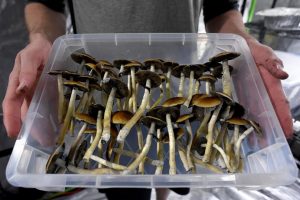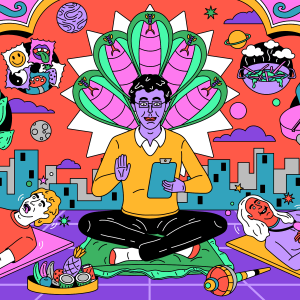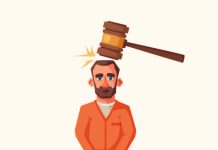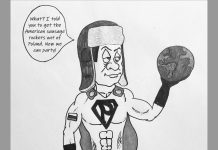Psychedelic: Therapy and Marijuana
As the world of medical and recreational marijuana expands, we have seen the numerous benefits of marijuana for mental struggles such as depression, anxiety, and PTSD. Because of this research more time has been devoted to the untapped potential of psychedelics, most importantly psilocybin mushrooms.
Clinical trials have shown lasting improvement for patients with depression years after taking their trip. To add to this, Oregon legalized mushroom therapy, which is a bold step forward for the psychedelic community. With all this going on some people might be skeptical about how this fungus can help us with these problems. Through both established research and personal experience, I will attempt to show how psychedelic mushrooms may be the hidden key for solving the most difficult of human problems.

Psychedelics: The Medical Therapy Side
Let’s first look into the medical side of psychedelic mushrooms according to Compass Pathways (a company I mentioned in this article) the therapy works as follows. First, the session starts as most clinical therapy does by getting the patient comfortable with the therapist. This makes sense as most people who take psychedelics will tell you, you need to be in a safe environment with someone you trust. This step is all about establishing trust so that one feels safe expanding their mind and sharing their thoughts.
The next step is the actual trip where the patient lies down with headphones playing a clinically designed playlist and wearing a blindfold. The therapist sits with the patient as they undergo their psychedelic experience. This allows patients to focus internally rather than externally. This is important as this reduction process allows the trip to take the tripper on their own journey about themselves.
Cheif innovator and co-founder at Compass Pathways Dr. Ekaterina Malievskaia states “We have created COMPASS to improve patients’ access to innovation in mental health. Through our personal experiences, we have learned how challenging it could be to find the right treatment and right expertise in time. We also learned that it could make all the difference in the outcomes. We walked that path so others don’t have to.”
The last part of this therapy process is for the patient to share their insights with their therapist about their journey. This allows the patent to walk through their own problems and relay the solving process to their therapist. This process is incredibly interesting however I don’t think that this process at all diminishes self-administered psychedelic mushroom trips. I think people’s non-medical but equally therapeutic sessions are just as valuable.

Psychedelics: My Personal Experience
Now I will talk about my personal experiences with taking mushrooms and how I can understand these fungi’s therapeutic benefits. I would like to mention the importance of the blindfold as it might seem wrong to reduce one’s visual psychedelic experience however that couldn’t be further from the truth. While it was amazing to see the spiraling and intense patterns laden within the trees and plants around me the most interesting and important part for me was pulling myself under an impossibly long blanket and looking inwards to myself.
I was able to learn so much about myself including working out my deepest issues. You still get the visual elements of your trip even when closing your eyes. You are exposed to an array of patterns and colors that work as a visual backdrop to the plot of your mind. While I am no expert in the field of psychology in my opinion the lack of interaction puts me off a bit. One of my favorite parts of the psychedelic mushroom experience is my connections with others. I loved talking to my friends and relaying my current experiences and internal evaluations.

In fact, I think that an important part of this kind of therapy is being able to communicate one’s current thoughts while tripping. I would be very interested to see what would happen if just the headphones were removed and the patient was allowed to talk to the therapist. Or perhaps if the therapy had two separate tripping sessions. One that is exactly the same as the one described by Compass Pathways and another one where the patient can communicate with their therapist.
Psychedelics: The Future
Overall I think the hidden potential for psychedelic treatment should not be discredited. Not only just mushrooms but other psychedelics as well. Mescaline or Peyote is a worthwhile treatment for alcohol addiction and LSD as a treatment for PTSD. This turn to psychedelics might be the kick we need to get people off of incredibly powerful and mind-altering prescription drugs and find actual solutions to these often difficult problems.
As Dr. Diego Pizzagali says “Currently available antidepressant treatments (e.g., medications, evidence-based psychotherapy) work well for many individuals, but up to 45% of individuals with major depression fail to respond to available interventions. Thus, there is an acute unmet need to develop novel treatment strategies for our patients.” Being able to help that 45% would be a huge development in the field of psychiatry.






